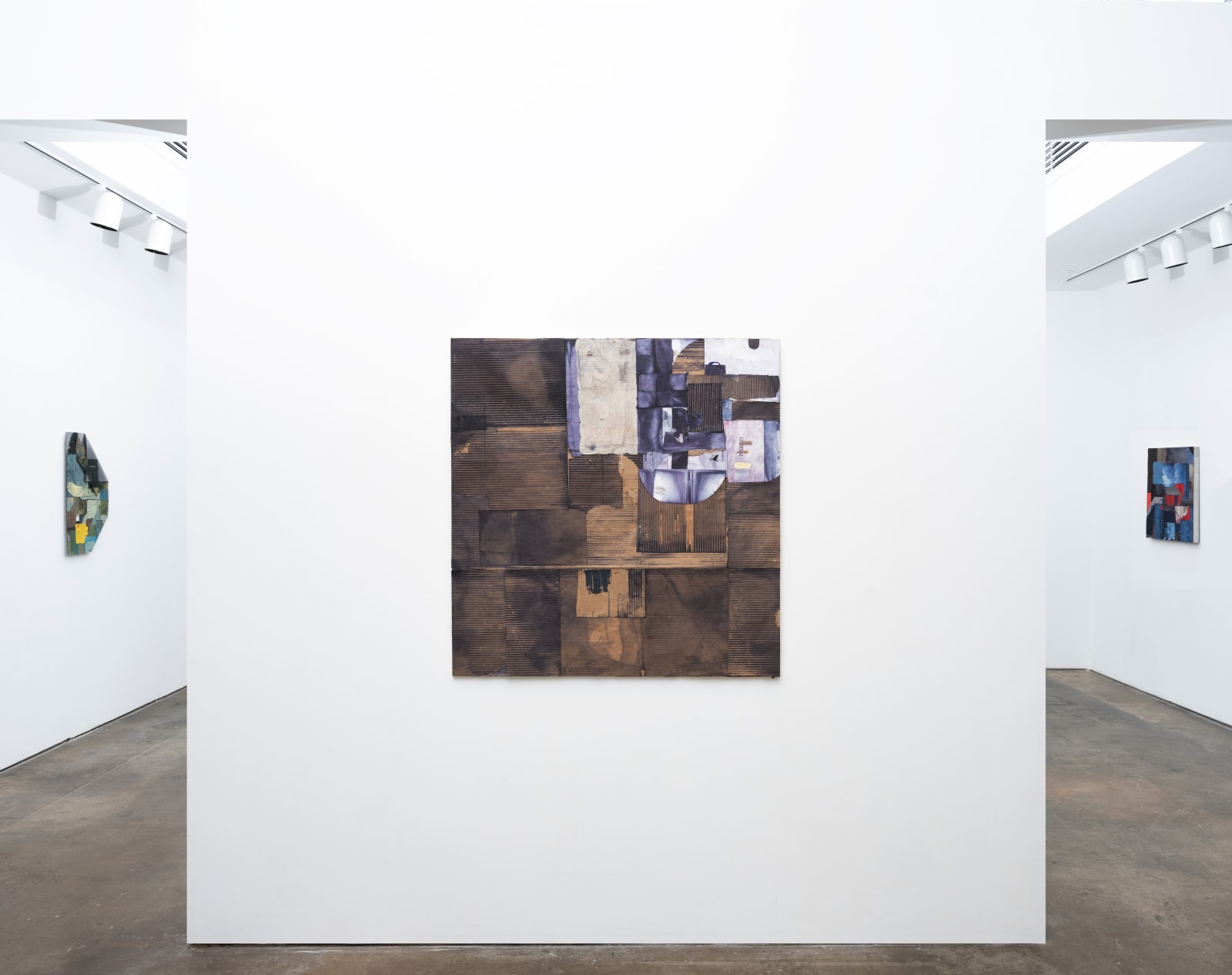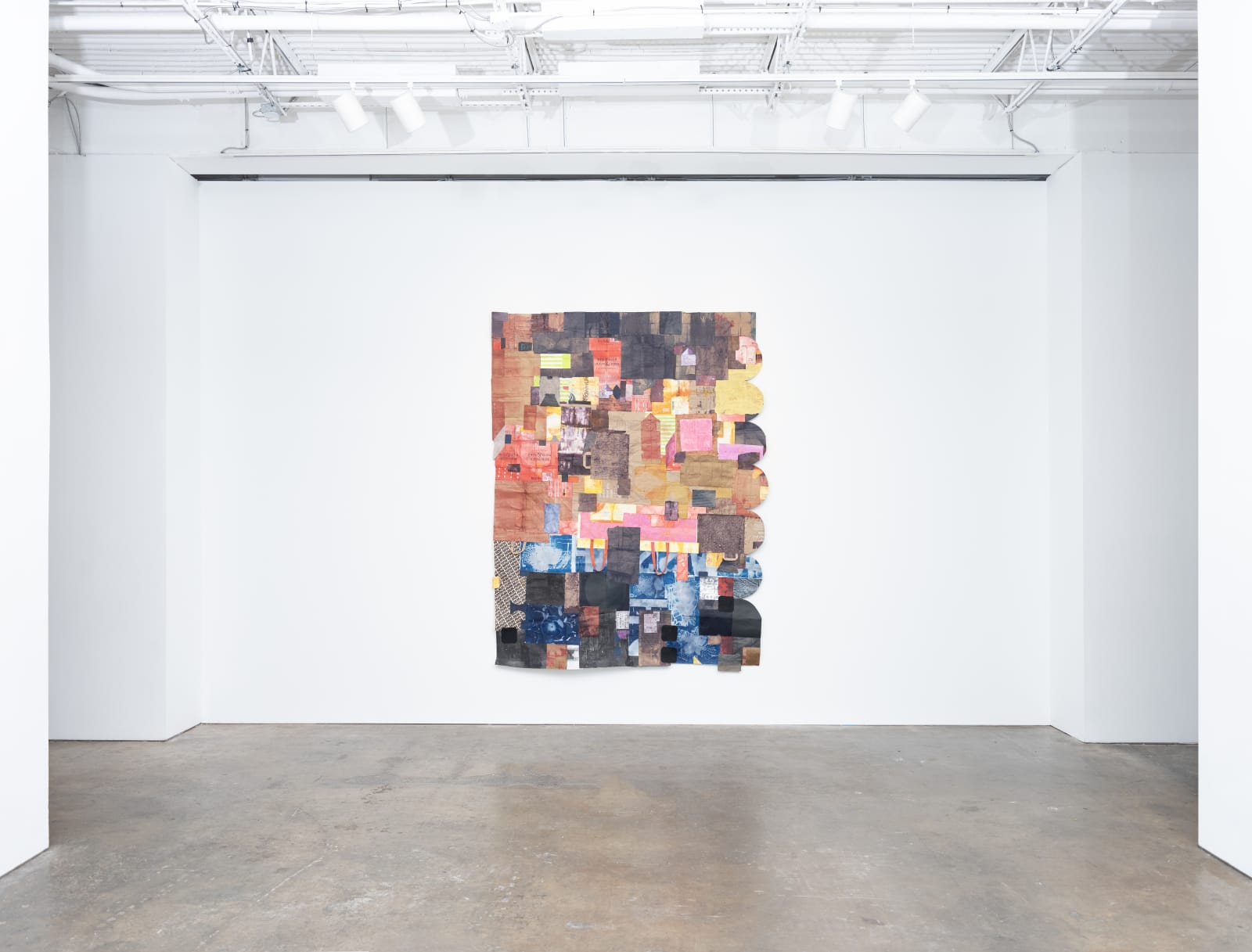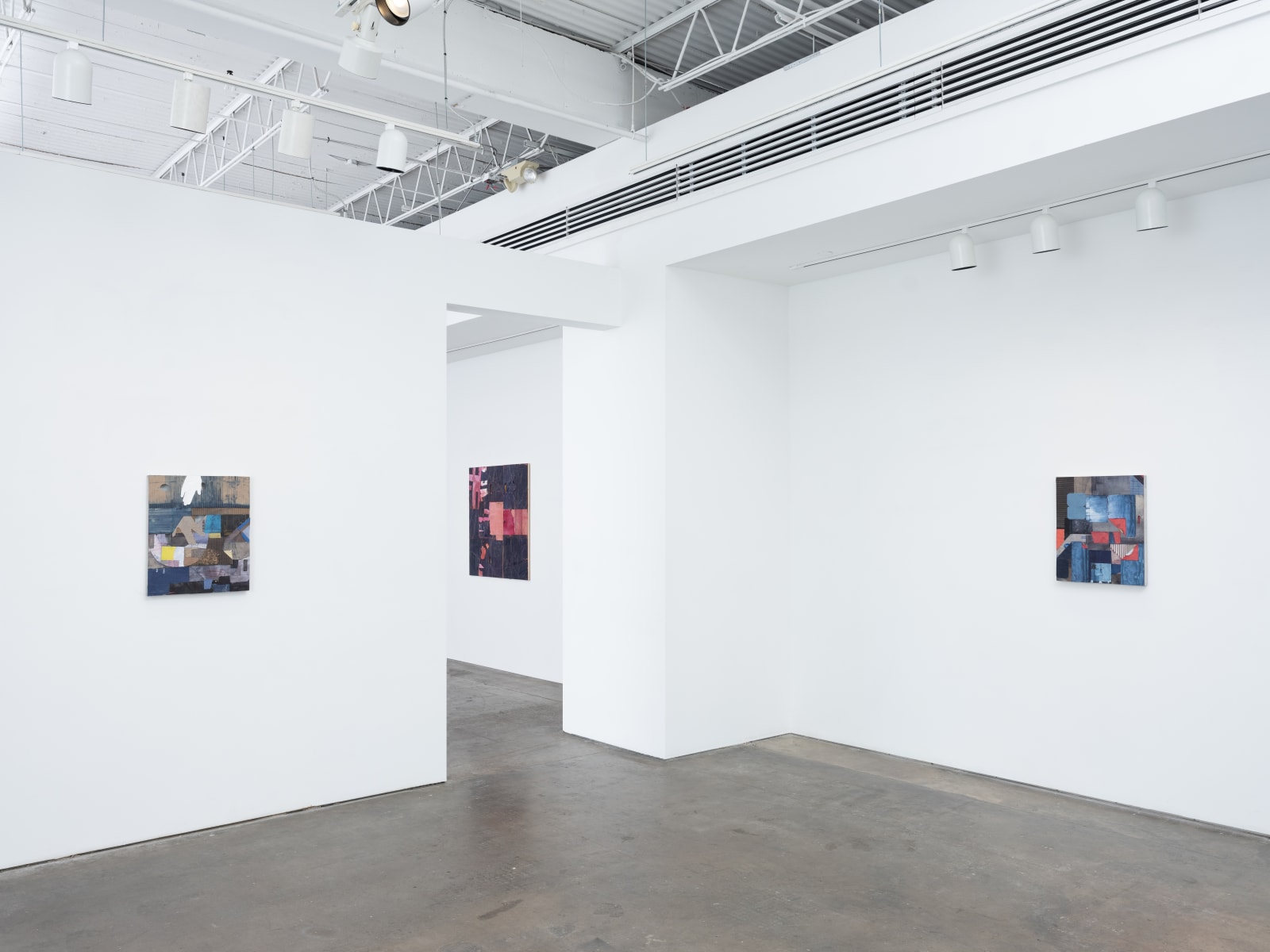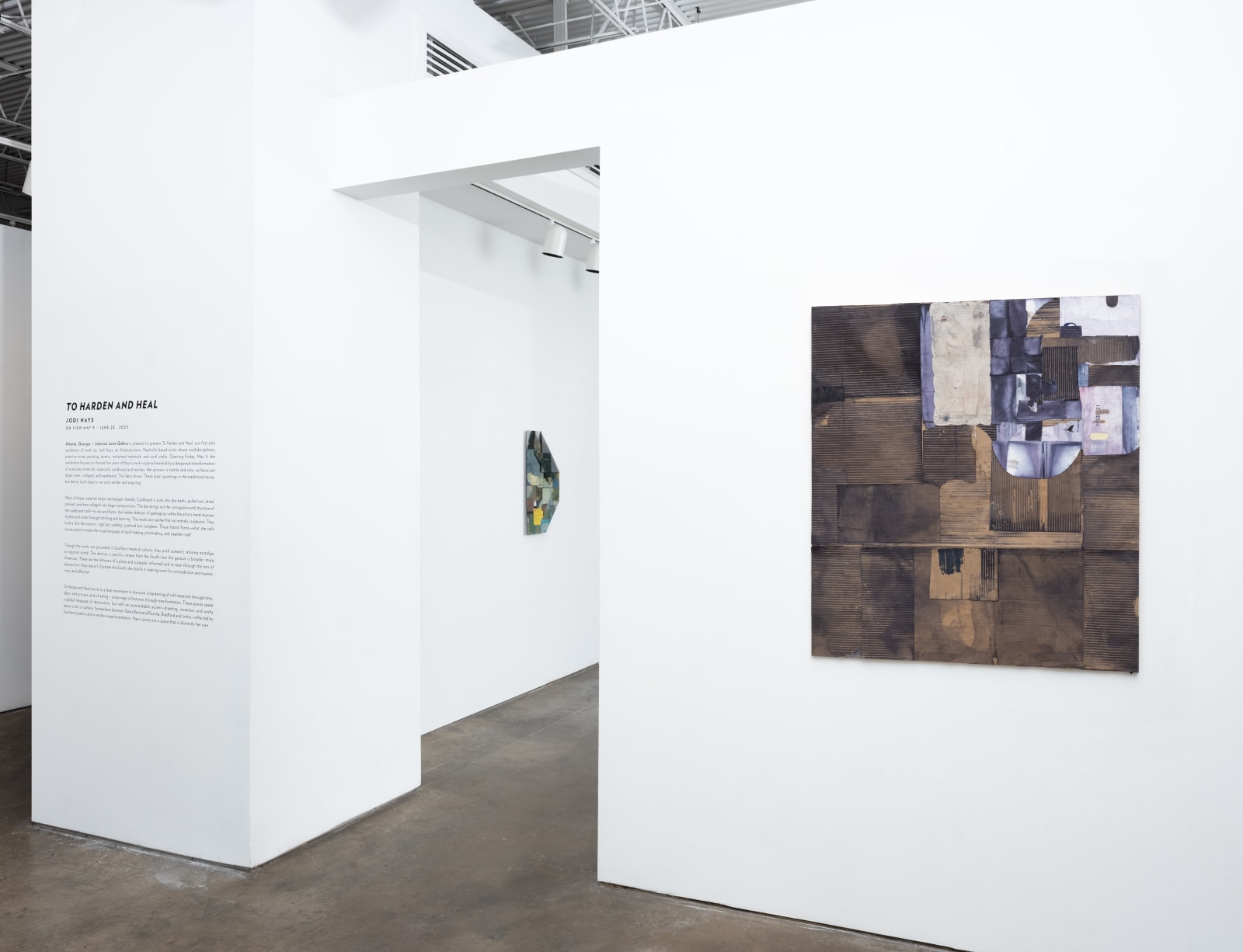To Harden and Heal: Jodi Hays
Atlanta, Georgia — Johnson Lowe Gallery is pleased to present To Harden and Heal, our first solo exhibition of works by Jodi Hays, an Arkansas-born, Nashville-based artist whose multidisciplinary practice mines painting, poetry, reclaimed materials, and rural crafts. Opening Friday, May 9, the exhibition focuses on the last five years of Hays’s work—a period marked by a deepened transformation of everyday materials, especially cardboard and textiles. Her process is tactile and slow: surfaces are dyed, sewn, collaged, and weathered. The labor shows. These aren’t paintings in the traditional sense, but dense, built objects—at once tender and exacting.
Many of these materials begin submerged—literally. Cardboard is sunk into dye baths, pulled out, dried, pressed, and then collaged into larger compositions. The dye brings out the corrugation and structure of the cardboard itself—its ribs and flutes, the hidden skeleton of packaging—while the artist’s hand imposes rhythm and order through stitching and layering. The results are neither flat nor entirely sculptural. They hold a skin-like tension: rigid but yielding, patched but complete. These hybrid forms—what she calls constructions—evoke the visual language of quilt-making, printmaking, and weather itself.
Though the works are grounded in Southern material culture, they push outward, refusing nostalgia or regional cliché. The detritus is specific—drawn from the South—but the gesture is broader, more American. These are the leftovers of a place and a people, reformed and re-seen through the lens of abstraction. Hays doesn’t illustrate the South; she distills it, making room for contradiction and nuance, irony and affection.
To Harden and Heal points to a dual movement in the work: a hardening of soft materials through time, labor, and process, and a healing – a marriage of histories through transformation. These pieces speak a global language of abstraction, but with an unmistakable accent—drawling, inventive, and unshy about color or surface. Somewhere between Gee’s Bend and Ruscha, Bradford and Johns—inflected by Southern poetics and a restless experimentation, Hays carves out a space that is distinctly her own.








